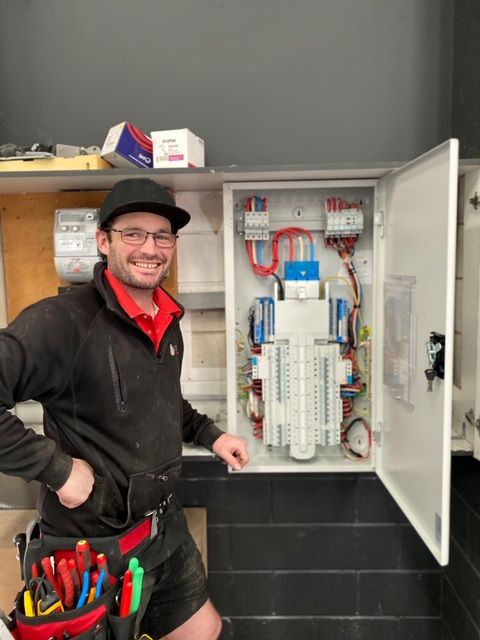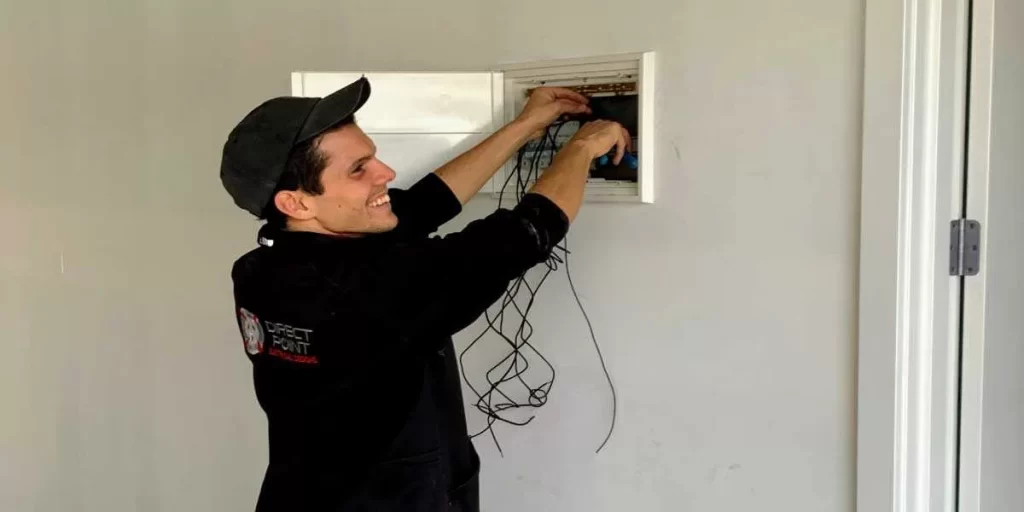When embarking on electrical installations for residential or commercial properties, many owners find themselves pondering the necessity of a main breaker in a sub panel. This question often surfaces during considerations for system upgrades or the addition of new circuits to accommodate increasing energy demands. Understanding the role and functionality of sub panels is crucial for establishing a safe, efficient, and reliable electrical infrastructure that meets modern standards.
In most cases, a sub panel does not require a main breaker since it derives its power from the main panel, which is equipped with a main breaker that governs the entire electrical supply. The breaker in the main panel serves as the primary disconnect for the entire electrical system, encompassing all sub panels connected to it. However, local electrical codes or unique installation circumstances may require a main breaker in certain sub panels to ensure enhanced safety and operational efficiency. Always check your local regulations to guarantee compliance with safety standards.
While a main breaker in a sub panel is not universally required, it can provide numerous advantages. It offers a convenient and swift mechanism to disconnect power to all circuits within that panel, eliminating the need to shut down the entire electrical system. This capability is especially useful during maintenance tasks or emergency situations, allowing for the safe isolation of specific sections of your electrical network, thereby significantly improving safety and accessibility during crucial moments.

Discover the Vital Roles and Benefits of Sub Panels in Your Electrical System
Sub panels are essential elements of electrical systems, designed to facilitate effective power distribution to various areas or appliances throughout a property. They not only enhance circuit management and organization but also improve the overall capacity to handle electrical loads efficiently. By strategically placing sub panels, property owners can optimize their electrical layouts, ensuring that different appliances and equipment receive the power they require to function properly.
Explore the Key Functions and Advantages of Sub Panels in Your Home
A sub panel—often referred to as a subsidiary panel or distribution board—functions as an additional electrical panel that branches off from the main electrical panel. Its primary purpose is to serve as a secondary distribution point for electricity within a building, providing increased flexibility and enhanced efficiency. Sub panels are typically installed to:
- Increase circuit capacity for a diverse range of applications and devices.
- Isolate the power supply to specific areas or equipment, ensuring safety and ease of use.
- Improve organization and management of the entire electrical system.
Common locations for sub panel installations include garages, workshops, and larger homes where the main panel may be situated far from areas needing power. By incorporating sub panels, property owners can achieve greater efficiency in power distribution, simplify circuit management, and enhance accessibility and control over their electrical systems.
Critical Considerations for Electrical Load Assessment Before Sub Panel Installation
Before proceeding with the installation of a sub panel, it is essential to conduct a comprehensive assessment of the electrical load requirements. Key factors to evaluate include:
- The total amperage needed for the designated area or equipment.
- The quantity and types of circuits required for specific applications.
- The distance from the main panel to the chosen sub panel location.
Accurately calculating the anticipated electrical load is vital to ensure that the sub panel can handle it safely. Typically, sub panels come in capacities ranging from 60 to 200 amps, depending on their intended use. Matching the capacity of the sub panel to your electrical requirements is crucial for operational efficiency and safety. Additionally, considering potential future expansions when sizing your sub panel can help avoid the inconvenience of needing subsequent upgrades or replacements as your electrical demands evolve over time.

Crucial Guidelines for Safe and Efficient Sub Panel Installation
To ensure the safe and effective installation of a sub panel, several key factors must be considered, including the selection of circuit breakers, compliance with regulatory standards, and the implementation of necessary safety measures. Understanding these installation requirements is vital for creating a secure and compliant electrical system that functions reliably.
Assessing the Need for Circuit Breakers in Your Sub Panel Installation
While sub panels may not always require a main breaker, the necessity can vary based on specific conditions, such as:
- The distance from the main panel: A local disconnect may be necessary if the sub panel is situated far from the main panel.
- The number of circuits: Sub panels with more than six breakers typically require a main breaker to enhance safety.
- Local regulations: Some jurisdictions mandate the installation of main breakers in all sub panels.
A main lug sub panel relies on the main breaker from the main panel for overcurrent protection, a common configuration when the sub panel is located near the main electrical panel. Being aware of the specific requirements for your installation is critical for ensuring compliance and safety throughout the system.
Navigating Regulatory Standards for Sub Panel Installations in Australia
In Australia, specific electrical standards govern sub panel installations, including:
- AS/NZS 3000: This standard outlines comprehensive requirements for all electrical installations, emphasizing safety and performance.
- Maximum rating: Main breakers for sub panels must not exceed the ampacity of the feeder conductors to ensure safe operation.
- Labelling: Clear identification of the power source for the sub panel is a mandatory requirement for safety and clarity.
Adhering to these standards is essential to ensure safety and legal operation. It is highly advisable to consult local authorities for details on specific regional requirements, and remember that all electrical work must be executed by a licensed electrician to guarantee full compliance and safety!

Implementing Robust Safety Measures for Sub Panel Installations
Implementing effective safety measures during sub panel installations is vital to minimize electrical risks and ensure operational safety:
- Proper grounding: Ensure the sub panel is adequately grounded to reduce the risk of electrical shocks and enhance system safety.
- Sufficient spacing: Maintain adequate clearance around the panel for easy access and proper ventilation, preventing overheating.
- Weatherproofing: For outdoor installations, utilize weather-resistant enclosures to protect against moisture and environmental factors that could compromise safety.
Furthermore, it’s essential to use the correct wire sizes and types that correspond with the anticipated load. Installing arc fault circuit interrupters (AFCIs) and ground fault circuit interrupters (GFCIs) according to code requirements is crucial for safety. Regular inspections and maintenance of the electrical installation significantly contribute to ongoing safety and compliance. Always engage a licensed electrician for sub panel installations to ensure rigorous adherence to all safety standards and codes.
Frequently Asked Questions About Sub Panels and Main Breakers
The complexities surrounding sub panels, including considerations about breakers, sizing, and regulations, can often overwhelm property owners. Achieving a clear understanding of the essential requirements is crucial for ensuring a safe and compliant electrical setup that adheres to local codes and safety standards.
Is a Main Breaker Necessary for a Sub Panel?
A sub panel does not universally require a main breaker. The necessity for one largely depends on its location relative to the main panel and the applicable local electrical codes. If the sub panel is located within the same building as the main panel, a main breaker is typically not required.
However, if the sub panel is housed in a separate structure, it generally must include a main breaker for safety and compliance, ensuring that all electrical installations meet local regulations.
Can a Main Breaker Panel Serve as a Sub Panel?
Yes, a main breaker panel can function as a sub panel, though it may not be the most efficient option. In this scenario, the main breaker would operate as an additional disconnect point rather than serving as the primary disconnect for the electrical system.
Choosing a panel specifically designed to serve as a sub panel is often more cost-effective and space-efficient, providing enhanced functionality tailored to your electrical requirements.
What Size Breaker is Appropriate for a 100 Ampere Sub Panel?
For a 100 ampere sub panel, it is advisable to utilize a 100 ampere breaker from the main panel to supply it. This breaker should match the sub panel’s rating to ensure optimal protection and performance, delivering a reliable power supply that meets the demands of connected devices.
Moreover, the wire size must also be adequate for handling a 100 ampere load, ensuring the entire electrical system operates safely and effectively, minimizing risks associated with overloads.
Which Regulations Oversee Electrical Sub Panels?
Regulations governing electrical sub panels can vary by region, but they primarily focus on promoting safety and accessibility. Key regulations typically include:
- Proper grounding and bonding procedures to enhance safety and reduce risks.
- Appropriate wire sizing to effectively accommodate anticipated loads without overheating.
- Sufficient spacing around the panel to ensure both accessibility and safety for maintenance and operation.
- Clear labelling of all circuits within the panel for better management and organization, facilitating quick identification during troubleshooting.
Always refer to local codes and consider professional installation to ensure full compliance with all regulations, thereby creating a safe electrical environment.
What is the Capacity Limit for a Sub Panel Connected to a 200 Ampere Main Panel?
A sub panel connected to a 200 ampere main panel does not have a fixed capacity limit. The size of the sub panel is contingent upon several factors, including:
- The available capacity in the main panel to support additional electrical loads without exceeding limits.
- The intended load requirements for the sub panel based on its specific usage and demand.
- The wire size utilized between the panels, ensuring it can safely handle the load without overheating.
It is feasible to install a 100 or 150 ampere sub panel, provided that the main panel possesses adequate spare capacity to support it, offering flexibility for future electrical needs and expansions.
How to Effectively Size a Breaker for New Sub Panel Installation?
To accurately size a breaker for a new sub panel, follow these structured steps:
- Calculate the total load that the sub panel is expected to support, taking into account all connected devices and their power requirements.
- Select a panel rated for that load or higher to ensure safety and reliability across the system.
- Choose a breaker in the main panel that aligns with the sub panel’s rating for optimal functionality and protection.
It is prudent to consider potential future expansion needs when sizing the panel. Often, installing a slightly larger panel than currently required can provide additional flexibility to accommodate future electrical demands, making your system more adaptable to changing circumstances.
The Article: Does a Main Breaker Need to Be in a Sub Panel? first appeared on https://writebuff.com
The Article Main Breaker Requirements for Sub Panels Explained Was Found On https://limitsofstrategy.com




It’s interesting how the topic of sub panels and main breakers delves into the complexities of our electrical systems, often overlooked until we start making changes or facing issues. I remember when I decided to add a home office, it became clear just how much we take our electrical setups for granted. I had to consider not only my computer equipment but also lighting, heating, and maybe a fridge down the line. The final decision to upgrade my system led me into a bit of research, and I found that understanding sub panels opened up a whole new perspective on energy management.
Your experience really resonates with me. It’s fascinating how our electrical needs often fly under the radar until a new project or need pops up, and then it feels like we’re suddenly thrust into a technical labyrinth. Setting up a home office is such a common scenario, and it really underscores how much thought we should put into our electrical systems.
Your insights about the necessity of a main breaker in sub panels resonate with the common dilemmas many homeowners and businesses face during electrical upgrades. It’s fascinating to think about how local codes can vary so much, leading to different requirements based on location or specific use cases. For instance, I’ve noticed in my own area that new constructions often mandate additional safety measures, like installing a main breaker in sub panels, especially if they’re going to support heavy-duty appliances or increased load from home office setups.